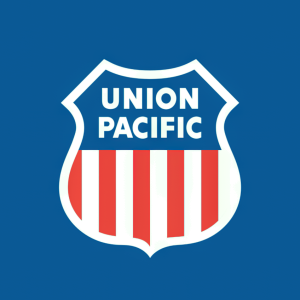Welcome to our dedicated page for Union Pacific news (Ticker: UNP), a resource for investors and traders seeking the latest updates and insights on Union Pacific stock.
Company Overview
Union Pacific (NYSE: UNP) is a publicly traded railroad holding company with a rich history and a robust presence in North America. Headquartered in Omaha, Nebraska, Union Pacific has established itself as a critical component of the nation’s transportation infrastructure by providing safe, reliable, and efficient freight services across a vast geographic area. Operating within the competitive landscape of rail transportation, the company plays an essential role in moving commodities that support everyday business and industrial operations.
Core Business and Operational Excellence
The core business of Union Pacific revolves around the transportation of diverse commodities including industrial products, agricultural supplies, chemicals, fertilizers, automotive goods, and more. With an extensive network of rail lines spanning the western two-thirds of the United States, the company offers a multifaceted range of services. Its operations include specialized rail freight, intermodal transportation, and bulk commodity hauling, ensuring that goods reach their destinations via one of the most energy‐efficient and environmentally sensitive modes available.
Network Capacity and Operational Advantages
The expansive rail network of Union Pacific is designed to optimize freight movement with efficiency and safety at its forefront. The company leverages an intricate transportation framework that minimizes transit times and supports a broad spectrum of industries. This network is further integrated with key intermodal hubs, creating a synergy between traditional rail services and modern logistics solutions that keep pace with evolving market demands.
- Extensive Track Network: Union Pacific operates an interconnected system that enhances supply chain connectivity across major urban and rural markets.
- Diverse Commodity Transport: Its freight operations encompass a variety of goods, ensuring wide-reaching service across sectors from industrial manufacturing to agriculture.
- Intermodal Integration: Strategic intermodal facilities bolster the company's operational capabilities by linking rail, road, and port logistics to streamline freight movement.
Revenue Streams and Market Significance
Union Pacific generates revenue through a diversified business model that is not reliant on a single commodity or geographic area. Its multiple revenue streams come from transporting goods critical to the nation's economy, such as agricultural products and industrial components. This financial robustness is underpinned by an emphasis on operational excellence and efficiency, which has enabled the company to maintain a strong market position despite the challenges inherent in the transportation sector.
Strategic Collaborations and Competitive Positioning
Union Pacific has built enduring relationships with both domestic and international partners. For instance, collaborations with inland port operations and initiatives to enhance intermodal services underscore the company's strategic approach to logistics and supply chain management. These partnerships not only expand its operational footprint but also facilitate more efficient and reliable freight solutions for its customers, positioning Union Pacific as a vital component of the broader logistics ecosystem.
Efficiency, Safety, and Environmental Considerations
The company emphasizes the efficiency and environmental benefits of rail transportation. Union Pacific continually refines its operations to reduce carbon footprints and enhance fuel efficiency, illustrating a commitment to sustainable practices. While safety protocols remain a paramount concern, the company's performance is also measured by its ability to reliably deliver goods with minimal disruption, thereby supporting both local economies and broader industrial networks.
Impact on the Regional and National Economy
Beyond its operational scope, Union Pacific plays a significant role in economic development across the regions it serves. By maintaining a network that supports critical industries such as agriculture, manufacturing, and chemicals, the company contributes to the overall stability and growth of the supply chain framework in North America. Infrastructure investments and strategic developments further illustrate its impact on local communities and its role in facilitating efficient market access for a diverse range of commodities.
Industry Challenges and Operational Adaptability
Operating in the complex field of freight transportation presents challenges such as fluctuating market demand, regulatory pressures, and evolving competition from other logistics solutions. However, Union Pacific demonstrates adaptability through its diversified business model and strategic adjustments in response to industry trends. The company’s emphasis on integration and operational efficiency enables it to navigate market challenges while maintaining consistent service quality and reliability.
Conclusion
In summary, Union Pacific stands as a cornerstone of North American rail transportation and freight logistics. Its extensive network, diverse revenue streams, and strategic collaborations highlight an operational model that is both intricate and resilient. By focusing on efficiency, safety, and a comprehensive understanding of market dynamics, Union Pacific continues to be integral to the functioning of modern supply chains, ensuring that goods are delivered reliably and efficiently from producers to consumers throughout the region.

